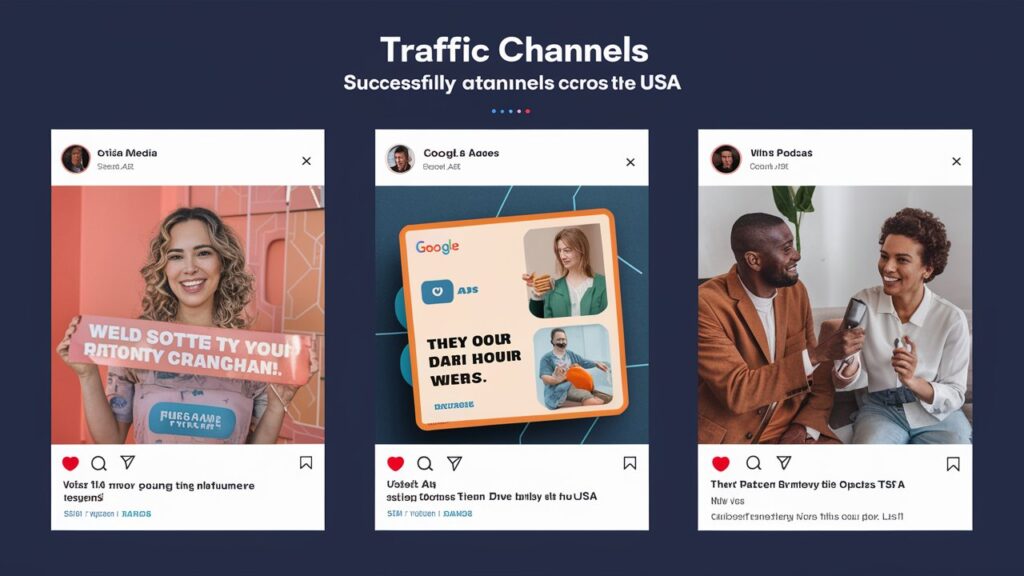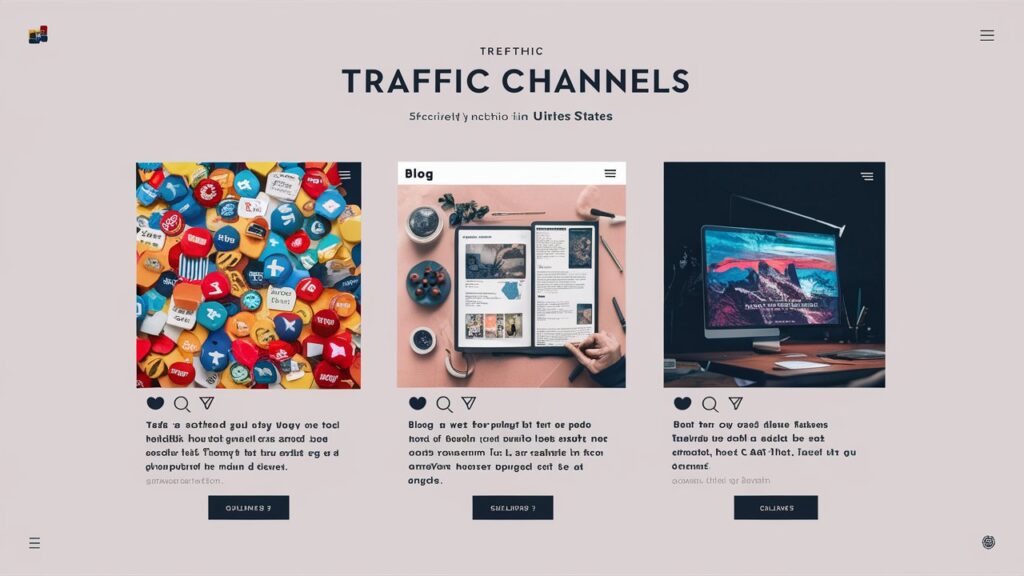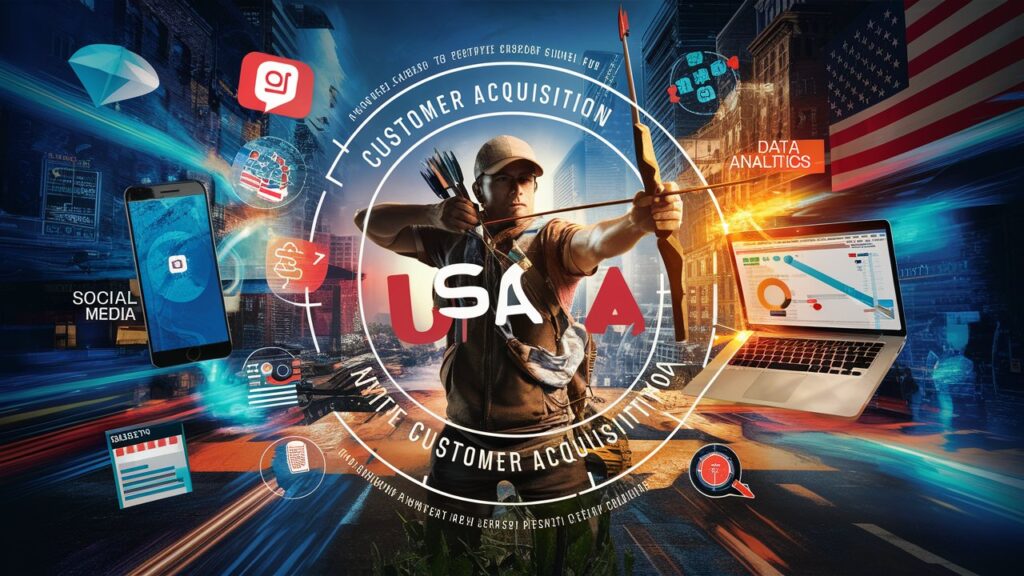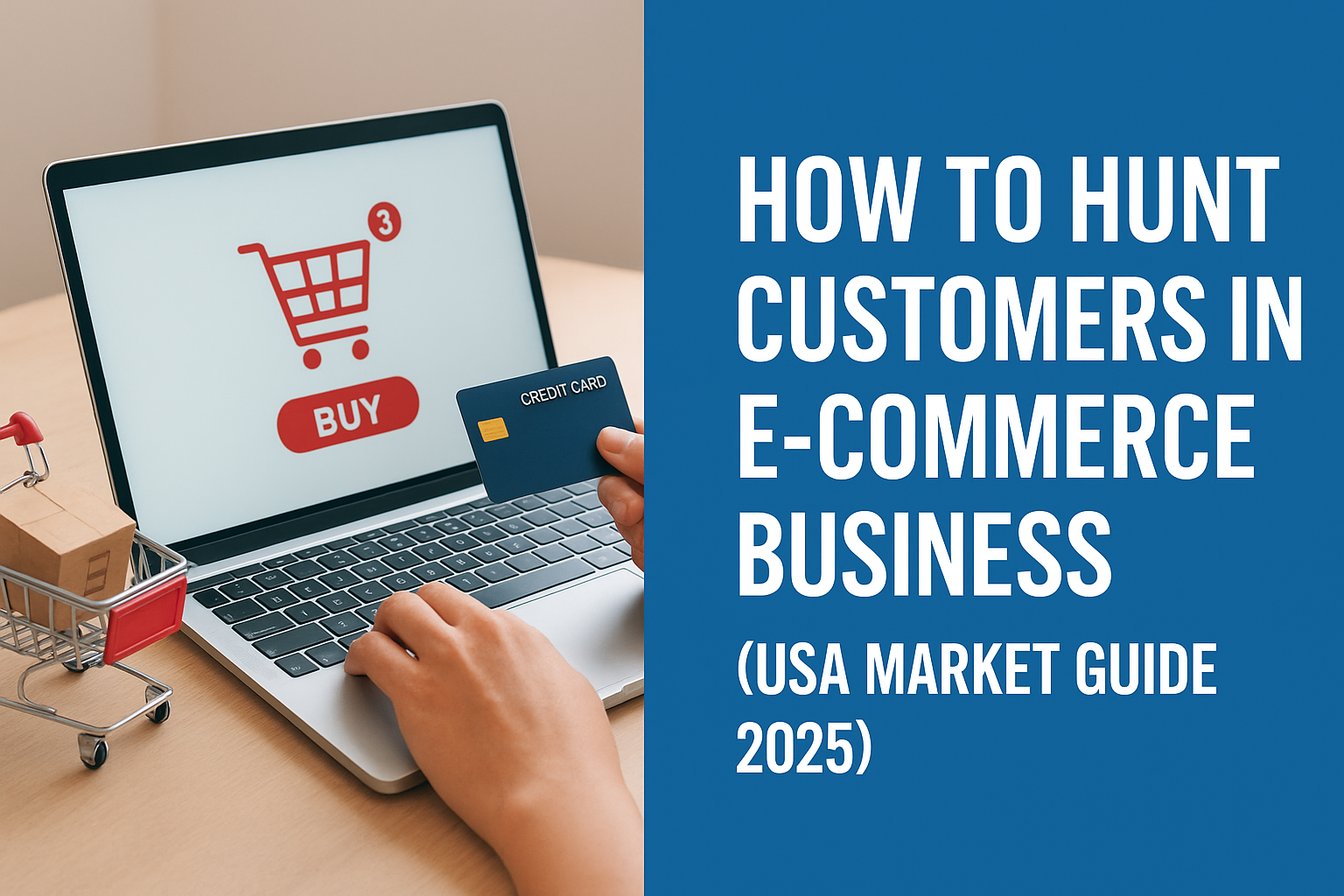Quick intro: Finding customers is the single most important skill for any e-commerce business. This guide shows proven ways to identify, attract, and convert customers in the USA market in 2025. Follow the roadmap below — from research to retention — and use the tools and templates provided to get faster results.
1. Understand the USA customer — start with research
Before you spend money on ads or build elaborate funnels, learn who your customers are. Market research narrows your focus and saves ad spend.

Steps for fast market research
- Define your ideal buyer: Age, gender, location (state/city), income range, occupation, hobbies, buying triggers.
- Use marketplace signals: Study bestseller lists on Amazon, trending items on Shopify stores, and top product categories on marketplaces to see demand.
- Competitor analysis: Read competitor reviews to find common complaints and feature gaps you can exploit.
- Keyword intent: Use keyword phrases like “buy [product] online USA”, “best [product] for [use case]”, and check monthly search volume to validate demand.
Pro tip: Keep a short spreadsheet with five buyer personas. When creating ads or product pages, write to one persona only — this boosts conversion.
2. Product-market fit: validate before scale
Validation prevents wasted inventory and ad spend. For USA sellers, validation can be simple yet powerful.

Validation methods
- Pre-sell or crowdfunding: Offer a pre-order at a discounted price to test true buying intent.
- Small test runs: Order small batches and test with local ads or marketplaces.
- MVP product pages: Build a single high-converting product page and send traffic; measure conversion before full launch.
3. Traffic channels that actually work in the USA (and when to use each)

Different channels suit different budgets and products. Here are the high-impact channels and quick instructions.
Paid Ads — Google & Meta (Facebook/Instagram)
Paid ads give the fastest customer data. Use Google when customers show purchase intent (“buy”, “best”, “near me”) and Meta for interest-based targeting.
- Google Ads: Start with Shopping campaigns for physical products. Use exact-match keywords and negative keywords to remove irrelevant clicks.
- Meta Ads: Use lookalike audiences built from your email list or converters. Test short video creatives and carousel ads for product demos.
Tip: Use UTM tags to track which ad brings the highest lifetime value customers.
Organic Search (SEO)
Long-term, organic search is the cheapest source of customers. Focus on product pages, category pages, and helpful content that answers buying questions.
- Optimize product titles and meta descriptions for purchase intent keywords.
- Write buyer guides and compare pages (e.g., “Best travel coffee mugs USA 2025”) to capture mid-funnel searches.
- Technical SEO: fast mobile speed, structured data for product pages, secure checkout, and an XML sitemap. Learn more about sitemaps here: How to create a sitemap.
Marketplace channels (Amazon, Etsy)

For many USA sellers, marketplaces are the quickest place to get buyers. Use them to discover demand, then scale via your store.
- Amazon: Optimize listings with high-converting images, bullet points, and A+ content. Consider Fulfillment by Amazon (FBA) to get Prime customers.
- Etsy/Shopify: Niche or handcrafted sellers should use Etsy; use Shopify when you want brand control.
Helpful platforms & tools:
- Jungle Scout / Helium 10 — Product research for Amazon.
- Shopify — Build branded stores quickly.
- Google Ads and Meta Ads — Paid traffic.
- HubSpot — Email automation and CRM for retention.
4. Build conversion-first product pages
Your product page must answer buyer questions fast and remove friction.
Essential product page elements
- Strong headline: Clear benefit + product name.
- High-quality images (3–8): Hero, lifestyle, and close-ups with alt text describing usage.
- Short bullets: Top 5 benefits. Use simple language buyers understand.
- Trust elements: Reviews, star rating, secure checkout badges, returns policy.
- Clear CTA: “Buy now — Free 2-day shipping in USA” or similar.
Example of a strong CTA: Buy Now — Free USA Shipping

5. Create funnels: attract, engage, convert
Don’t rely on one-time clicks. Build funnels that bring customers from awareness to purchase.
Simple e-commerce funnel
- Awareness: Social or search ads drive to a product landing page or blog post.
- Interest: Offer a lead magnet (10% off, free guide) in exchange for email.
- Desire: Send product benefit emails, social proof, and limited-time offers.
- Action: Strong CTA and simple checkout with multiple payment options.
Internal content helps SEO and funnels: add product-related blog posts like video guides. For example, learn about video marketing to promote products: What is Video Marketing?
6. Email marketing — your highest ROI channel
Email turns visitors into buyers and buyers into repeat customers. Build a simple sequence:
- Welcome email: Immediate delivery of incentive + brand story.
- Product education: 2–3 emails showing product use cases and testimonials.
- Cart abandonment: Reminders + small discount after 24–48 hours.
- Post-purchase: Thank you, tips, and a cross-sell 7–14 days later.
7. Use content to capture search and social traffic

Content ranking on Google brings steady USA buyers. Make content that answers buyer questions and pushes readers toward product pages.
Types of high-value content
- How-to guides: Show product in real use — includes images or embedded video.
- Compare & best-of lists: “Best [product] for [use case] in USA” — buyers compare before they buy.
- Product demos: Short videos show value quickly — embed on pages and social ads.
Need help writing meta descriptions that convert? Check this guide: How to write meta descriptions for SEO.
8. Social proof & reviews — convert faster

In the USA market, reviews build trust fast. Collect and display reviews everywhere.
- Ask for reviews by email 7–10 days after delivery.
- Use verified review badges and seller ratings (if on marketplaces).
- Highlight user-generated content (UGC) on product pages and ads.
9. Retention strategies — make customers come back
Acquiring customers is expensive; retention increases lifetime value (LTV).
- Subscription or refill model: If your product fits, subscriptions create predictable revenue.
- Loyalty programs: Points, early access, and member discounts.
- Automated re-engagement: Win-back emails and special re-offers.
10. Track the right metrics
Measure what matters to improve customer hunting:
- Customer Acquisition Cost (CAC): Total marketing spend / new customers.
- Conversion Rate: Visitors → buyers on product pages.
- Average Order Value (AOV): Revenue / orders.
- Customer Lifetime Value (LTV): Expected revenue per customer over time.
- Return on Ad Spend (ROAS): Revenue from ads / ad spend.
11. Tools to speed up customer hunting (USA-focused)

Here are practical tools you can start using today:
- Product research: Jungle Scout, Helium 10.
- Store platform: Shopify.
- SEO & keywords: SEMrush, Ahrefs (use for USA keyword research).
- Ads: Google Ads, Meta Ads Manager.
- Email & CRM: HubSpot, Klaviyo for e-commerce.
12. Quick case study (short example)

Scenario: A US-based seller launched a travel mug targeted to commuters. Steps used:
- Used Amazon/Helium 10 to confirm demand and price points.
- Built a lean Shopify page with 5 images and clear benefits.
- Ran $500 Meta ads targeted to USA commuters age 25–45 and layered lookalikes from an initial purchase list.
- Collected emails via a 10% discount pop-up and sent a 3-email welcome sequence.
- Scaled profitable campaigns, added subscription option, and achieved 28% repeat purchase within 90 days.
This pattern — research, quick validation, paid test, email funnel, and scaled retention — is repeatable across many product types.
13. Practical checklist: launch to first 100 customers

- Define 1–2 customer personas for the USA market.
- Validate demand via marketplace data or pre-sell.
- Create a strong product page (images, bullets, reviews).
- Run a small paid test ($200–$800) on Google or Meta.
- Collect emails and activate a 5-email funnel.
- Track CAC, conversion, and ROAS — optimize winning ads.
- Activate retention (subscription / loyalty) after first 50 buyers.
14. Common mistakes to avoid

- Trying to win every customer — be specific about who you sell to.
- Skipping customer feedback — reviews and returns tell you what to fix.
- Scaling ads before your page converts — fix low conversion first.
- Ignoring mobile users — most US buyers use mobile; test mobile funnels.
15. Resources & further reading
- Shopify — Build an online store
- Amazon Seller Central — Sell on Amazon
- HubSpot — Email & CRM
- Video marketing helps product discovery — learn basics: What is Video Marketing?
